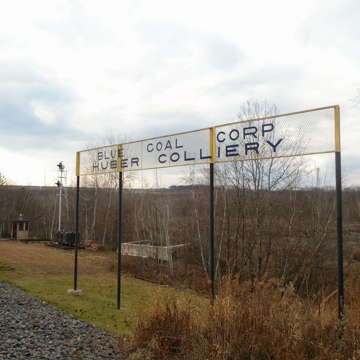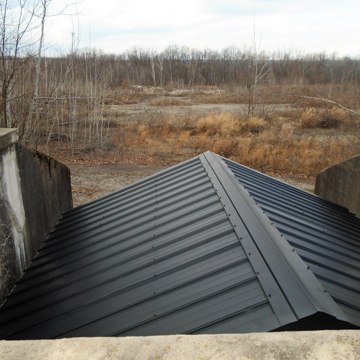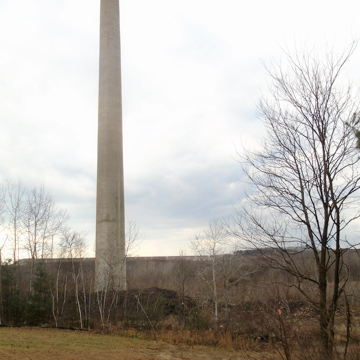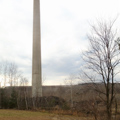The Glen Alden Coal Company's Huber Breaker, one of the region's two remaining large anthracite breakers, towers over the frame workers’ houses of Ashley like a medieval cathedral over its village. Its steel frame is sheathed with a glass curtain wall interrupted by occasional piers—a daylighting solution first seen in the nearby Loomis Breaker of 1914 (demolished). Daylight was needed because the breaker was an inhabited machine, performing the filthy work of processing seven thousand tons of coal daily: gathering it from the mines, cleaning it in giant “Menzies cones” that used high-pressure water to separate coal from refuse, sorting it by size, and, before shipping, spraying it with the iridescent blue chemical that, in a nascent attempt at branding, produced the “Blue Coal” known to radio listeners and anthracite consumers throughout the nation. The adjacent power plant, itself a massive structure, was fueled with coal “fines” from the breaker. The Huber has been abandoned since 1976.
Nearby stand the ruins of the Ashley planes, which from 1837 to 1948 transported coal approximately 1,600 feet up and over Penobscot Mountain. Built as part of the Lehigh and Susquehanna Railroad linking the Lehigh Navigation Canal to the Wyoming coalfields, the planes eventually consisted of four separate inclined railroads hauled by cable and stationary engines that rose to an elevation of approximately 1,600 feet above the Susquehanna River and carried both freight and passenger cars. Work is now underway to preserve the site.







